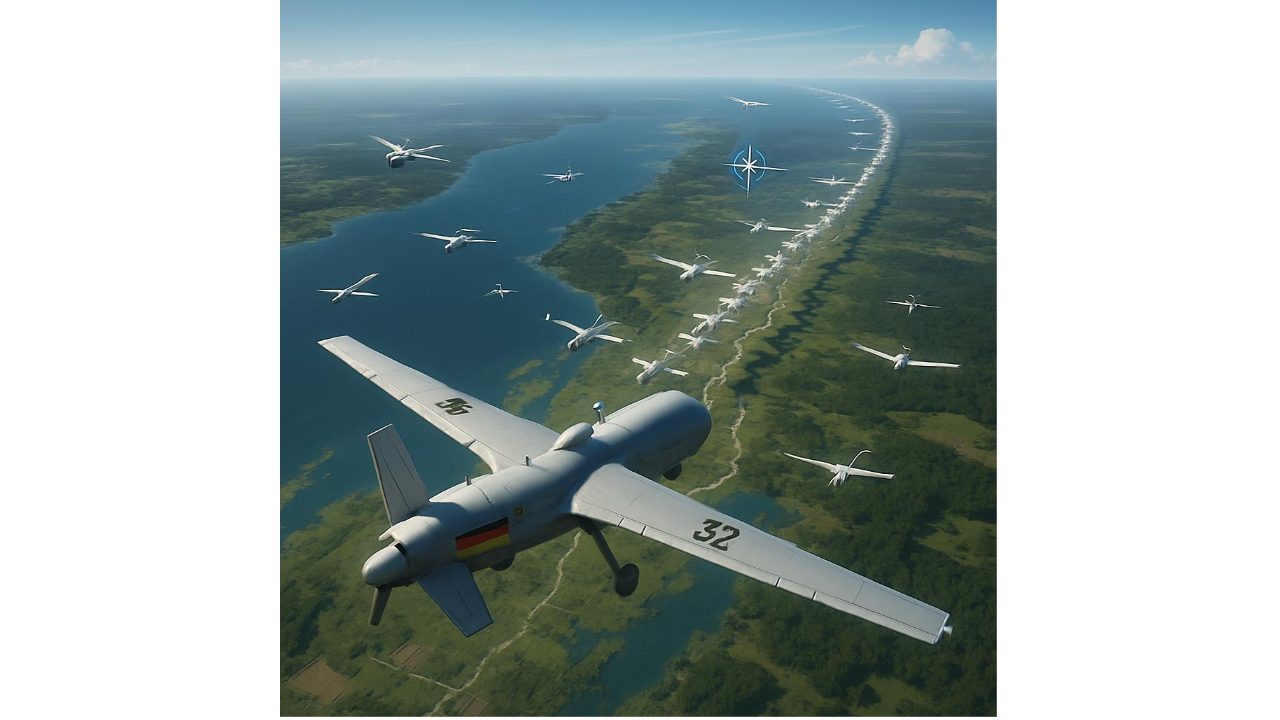Germany’s Defense Initiatives: Building Europe’s New Security Architecture
In response to Russia’s invasion of Ukraine and escalating security threats across Europe, Germany has emerged as a leading force in reshaping the continent’s defense landscape through two ambitious initiatives: the European Sky Shield Initiative and the NATO “Drone Wall.”
These complementary programs represent a fundamental shift in European defense thinking, moving toward greater strategic autonomy while strengthening collective security.
The European Sky Shield Initiative
The European Sky Shield Initiative (ESSI) stands as one of the most significant of the current European multilateral defense projects.
Originally proposed by German Chancellor Olaf Scholz in August 2022, the initiative emerged during the height of Russian strikes against Ukrainian infrastructure, highlighting Europe’s vulnerability to modern missile threats.
The ESSI is designed as a ground-based integrated European air defense system with anti-ballistic missile capabilities.
Under Germany’s leadership, the initiative aims to bolster European air and missile defense through joint acquisition of air defense equipment and missiles by European nations.
As of 2025, 24 European states participate in the initiative, making it one of NATO’s most comprehensive collective defense projects.
The system’s technical architecture relies on a multi-layered approach.
For long-range interception, the initiative incorporates Israel Aerospace Industries’ Arrow-3 system, while medium-range threats are addressed by U.S. Raytheon Patriot missiles.
Short-range targets fall under the purview of the German-made Diehl Iris-T system.
This configuration reflects both the urgent need for immediate capabilities and the current limitations of purely European defense technologies.
The Drone Wall
Parallel to the ESSI, Germany is spearheading another initiative: the construction of NATO’s “Drone Wall” along the alliance’s eastern border.
This project envisions a continuous network of unmanned aerial systems stretching from Norway to Poland, covering approximately 1,850 miles of NATO’s most vulnerable frontier.
Announced in 2024, the Drone Wall represents a response to Russia’s use of unconventional warfare tactics, including drone incursions, GPS jamming, and cross-border provocations. Lithuania’s Interior Minister Agnė Bilotaitė described it as “a completely new thing, a drone wall stretching from Norway to Poland, and the goal is to use drones and other technologies to protect our borders”⁷.
The technical specifications of the Drone Wall are impressive in scope and sophistication. Built around a layered system of AI-powered reconnaissance drones, ground-based sensors, mobile counter-drone platforms, and satellite surveillance, the system aims to detect and disrupt threats in real-time while providing NATO with faster, more accurate intelligence across its most exposed borders.
Germany leads the project with backing from six NATO countries: Estonia, Latvia, Lithuania, Finland, Poland, and Norway. Estonia has already committed €12 million over three years, while other participating nations are developing their contributions through local defense industry clusters.
The Significance of the Efforts
These initiatives reflect a broader transformation in European defense thinking.
The shift toward strategic autonomy has accelerated under renewed pressure from the United States, particularly following President Donald Trump’s return to office and his continued emphasis on burden-sharing within NATO.
Germany’s Chancellor Friedrich Merz has prioritized defense modernization, introducing sweeping reforms that lift spending caps on military programs. His government has passed historic legislation exempting defense projects costing more than one percent of GDP from Germany’s constitutional “debt brake,” marking a significant departure from post-war fiscal restraint.
Martin Karkour, chief sales officer at German drone manufacturer Quantum Systems, emphasized the importance of European-produced systems: “European-made systems ensure strategic autonomy and keep sensitive data under European control.” He noted that with proper political coordination, “a first operational layer—using existing, proven technology—could be deployed within a year”.
The strategic rationale behind these initiatives extends beyond mere technological capability.
An air defense shield would aim to prevent Russian missiles and drones from striking NATO territory, potentially triggering Article 5’s mutual defense clause.
In this sense, the shield serves a de-escalatory function by averting possible Article 5-level crises that could spiral out of control.
The Drone Wall specifically addresses the challenge of gray-zone warfare, where traditional deterrence mechanisms prove insufficient.
Gundbert Scherf, CEO of German AI defense firm Helsing, explained the deterrent effect: “If we deploy there in large numbers, rely on asymmetric capabilities and concentrate tens of thousands of combat drones there, then it will be a very credible conventional deterrent”.
Work on both initiatives is already underway.
Poland has begun construction under its Shield-East program, planning 700 kilometers of surveillance infrastructure.
The final configuration will depend on top-level political direction within NATO¹⁵.
However, significant challenges remain.
France has been resistant to the ESSI, citing excessive reliance on non-European equipment and technology.
French officials have expressed dissatisfaction that the French-Italian SAMP-T system is excluded from the initiative, leading to counter-proposals and calls for alternative approaches.
Funding represents another critical consideration.
While European Union funds may support the Drone Wall initiative, the scale of investment required for both projects will test European defense budgets and political commitment, despite the funding commitments made at the recent NATO summit.
Nonetheless, the combination of the European Sky Shield Initiative and the Drone Wall represents the most ambitious attempt to create a comprehensive, technologically advanced defense architecture since the Cold War.
These projects demonstrate Europe’s growing capacity for independent action while maintaining NATO integration.
As traditional security assumptions face unprecedented challenges, Germany’s initiatives offer a blueprint for how European nations can assume greater responsibility for their collective defense while adapting to the realities of modern warfare.
The success of these initiatives will depend not only on technological innovation and financial commitment but also on the political will to overcome national interests in favor of genuine European strategic autonomy.
As the security landscape continues to evolve, these German-led initiatives provide a stimulus to the europeanization of the alliance.

